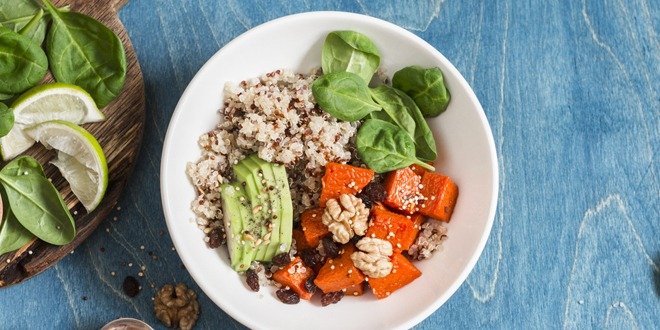
When people are diagnosed with diabetes, one of the first responses is often “so I suppose desserts are now banned?” It’s a common misconception. Living with type 2 diabetes doesn’t mean saying goodbye to desserts forever. For many Canadians managing this condition, the idea of enjoying a sweet treat might feel off-limits—but the good news is that with the right approach, desserts can still have a place in a balanced, diabetes-friendly lifestyle.
One of the key pillars of managing this condition is maintaining steady blood sugar levels, often through a combination of medication, regular physical activity, and dietary choices. Carbohydrates, including sugar, play a significant role in blood glucose levels, which is why desserts require extra attention. But that doesn’t mean you have to skip them altogether.
Balance your carbs in your meal plan
Desserts contain carbohydrates from sugar, fruit or sweeteners. As such, if a dessert is a planned part of your food selection on a particular day, it must be counted within the carb limits of your diabetes meal plan. This means substituting it for other carbohydrates that you are havng over the course of the day.
These other carbs may be healthier foods. For example, whole grain breads and pasta or rice are generally more nutritious than cakes. Sugar also has a very high carb count, which raises blood glucose levels quickly. For these reasons, although you can occasionally enjoy a very small dessert serving, it is usually recommended to save desserts for special occasions.
If you are including dessert, consider ones made with whole grains, fibre, and healthy fats as these can help reduce the glycemic impact. For instance, a small bowl of Greek yogurt with berries and a sprinkle of ground flaxseed can offer sweetness along with protein and fibre, which slows glucose absorption.
Canada’s Food Guide emphasizes the importance of limiting highly processed foods and added sugars, while encouraging the intake of whole foods.
Reconsider the size of your dessert
Serving size is very important. If in a restaurant, suggest sharing a small portion to keep the carb count down. Remember that even a small serving will need to substitute for another carbohydrate in the meal. For example, dessert might be a substitute for your bread portion.
Even with healthier ingredients, portion control remains essential. A small piece of dark chocolate or half a homemade muffin can satisfy a sweet craving without significantly affecting blood sugar. Using the “Plate Method” recommended by Diabetes Canada—where half the plate is vegetables, a quarter is protein, and a quarter is whole grains or starchy vegetables—can also guide dessert portions in context of the full meal.
Look at possible substitutions
Making desserts at home gives you full control over ingredients. Substituting white flour with almond flour or oat flour, using unsweetened applesauce or mashed bananas instead of sugar, or incorporating sugar substitutes like stevia or erythritol can help make treats more diabetes-friendly.
Traditional Canadian desserts like butter tarts or nanaimo bars can be modified with some creativity. For example, using a date and nut crust, reducing sugar content, or swapping out condensed milk with Greek yogurt or tofu-based fillings can retain flavour while supporting better glycemic control.
Remember that fruits can be the basis for delicious and healthier desserts, although they too contain carbohydrates and must substitute for another carb in the meal. You can buy sugar-free whipped toppings to jazz fruits up, or try a sauce like pureed raspberries over a perfectly ripe peach or a poached pear.
Fat is another culprit in many desserts. Look for recipes that substitute fruit sauce for part of the fat content. Fat-free angel food cake is also a delicious option, served with seasonal or frozen berries.
What are some diabetes-friendly dessert options?
There are many delicious and diabetes-friendly dessert recipes available on this website. Some popular options include Ginger and Cinnamon Poached Pears, Honeyed ricotta walnut brittle strawberry bites, and Baked Plum & Blueberry Crisp. You can also try Overnight Chocolate Pumpkin Chia Pudding, a flavourful dessert loaded with protein and fibre.
What strategies can help manage sweet treats at family or cultural celebrations?
For many, dessert is more than just food—it’s part of culture, tradition, and social connection. Whether it’s maple syrup treats during a Québec winter festival or Diwali sweets shared among families in Toronto, enjoying desserts in moderation can be a meaningful part of life. Planning ahead, checking blood sugar levels, and incorporating physical activity can help make room for those special indulgences.
When people with diabetes are attending social events and don’t want to indulge in desserts, it can be helpful to plan excuses ahead. For example, if you don’t want to get into a conversation about diabetes, it would be perfectly appropriate to say something like “No, thank you, I’m way too full!”
With informed choices, smart substitutions, and a focus on moderation, it’s possible to enjoy the occasional sweet treat without compromising your health goals. After all, living well with diabetes is about balance—not deprivation.



